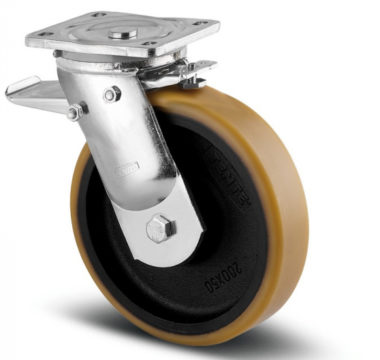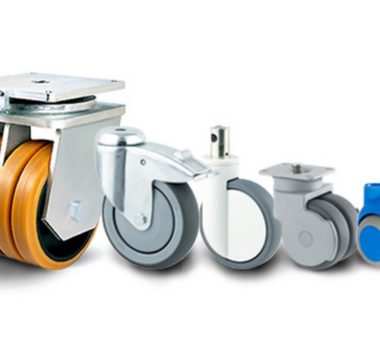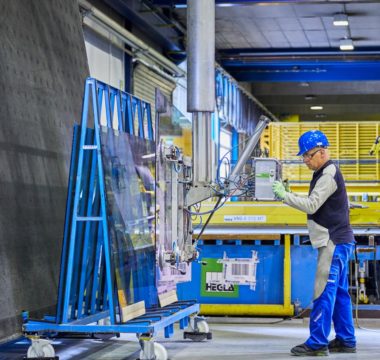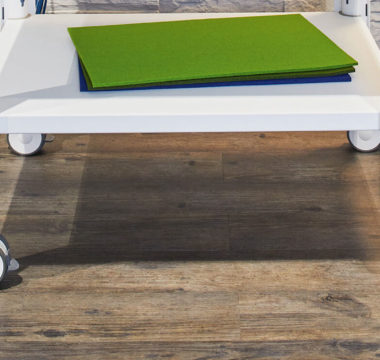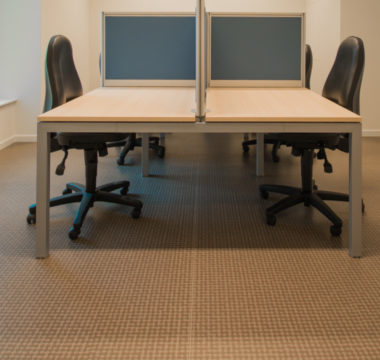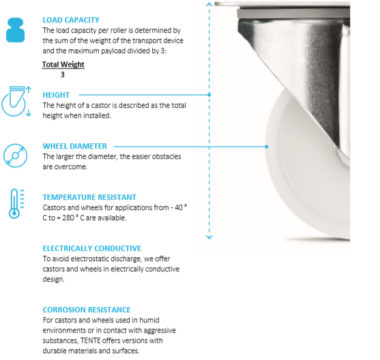Castors are used in many different environments, from offices to warehouses, hospitals to production facilities; there is no limit. Regardless of the environment, when selecting castors and wheels, maneuverability, load capacity and the flooring type are key elements to consider. However, in many situations there is an even more important feature to consider for the safety of both people and equipment, the braking mechanism or how to stop castors from moving.
Different Brake Systems For Different Purposes
When thinking about the most suitable braking system for your application, it is important to consider the working environment and the castor usage. Key issues to take into consideration are safety and ergonomics.
To solve challenges and meet the needs of every type of situation, there are different braking systems which can be added to the mobility solution. Wheel brake, central and directional locking and deadman brake.
Use Castors With Brakes On
The wheel brake is typically used on swivel castors and can be found all around us, on office chairs, supermarket trolleys, healthcare furniture, etc. When using a wheel brake, it is very important to think about how much weight the brake can hold and how easy it is to actuate the brake – both to stop and release. Some brake types, such as office chairs will release when weight is put on and tighten when the weight is removed. This is for the safety of the user to ensure that the chair does not move unintentionally when you sit down on the chair.
https://www.tente.co.uk/castors/furniture/linea-maxtech-4031582437089
https://www.tente.co.uk/industries/cleaning-and-maintenance/alpha-elastech-4031582305890
Other Creative Solutions To Stop Castors From Moving
Central and directional locking is a bit more complicated in its construction, but nevertheless very important in certain applications such as hospital beds, rehab equipment, treatment chairs, etc. The actual brake is not visible as it is integrated into the castor and operated by hand using brake bars or handles connected to the movable furniture. Both safety and ergonomic issues are extremely important in this area of usage.
The safety issue is obvious – how to stop castors from moving when in use e.g. a hospital bed carrying a patient. The importance of the bed being in a fixed position is to prevent accidents from patients and residents falling in hospitals and care homes.
Another important issue is the working environment of healthcare workers, being able to move hospital beds across large distances and around corners in narrow halls. Easy maneuverability and easy stopping and releasing of brakes are essential to avoid personal injuries such as strains on neck, back, shoulders, etc.
https://www.tente.co.uk/industries/medical/levina-supratech-4031582355024
In some working environments a deadman brake is needed, especially for the safety of employees when handling trolleys with heavy loads. To ensure that a heavy trolley does not lose control, the deadman brake will activate as soon as the employee lets go of the trolley bringing the trolley to an instant stop.
Which Type Of Brake Do You Need?
The type of brake needed depends very much of the environment and the usage considering key issues like safety and ergonomics. As described above there are numerous options and a brake can be added to meet any kind of need.
So how do you stop castors from moving? Add a brake selected and customized to your special requirement.





